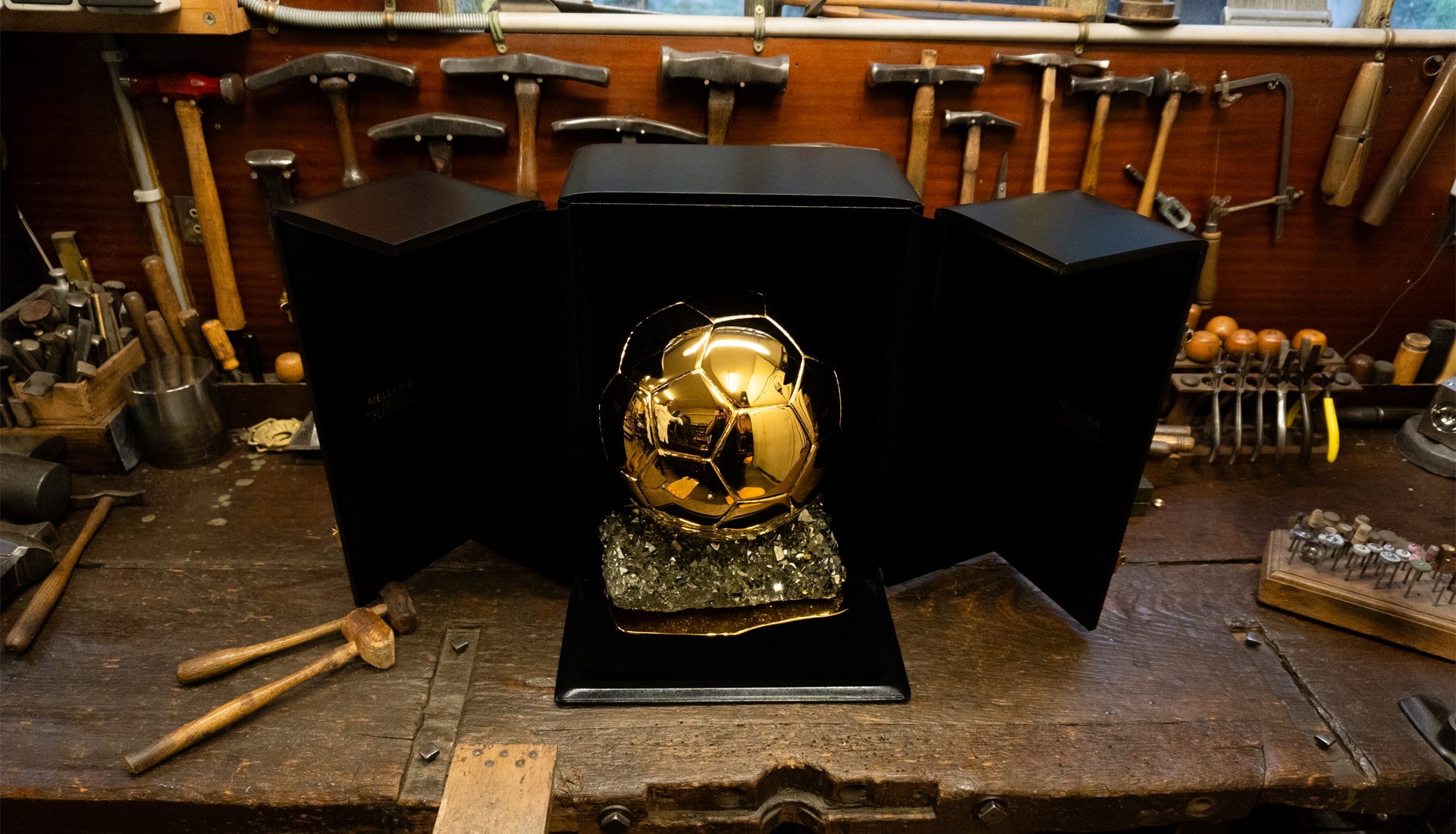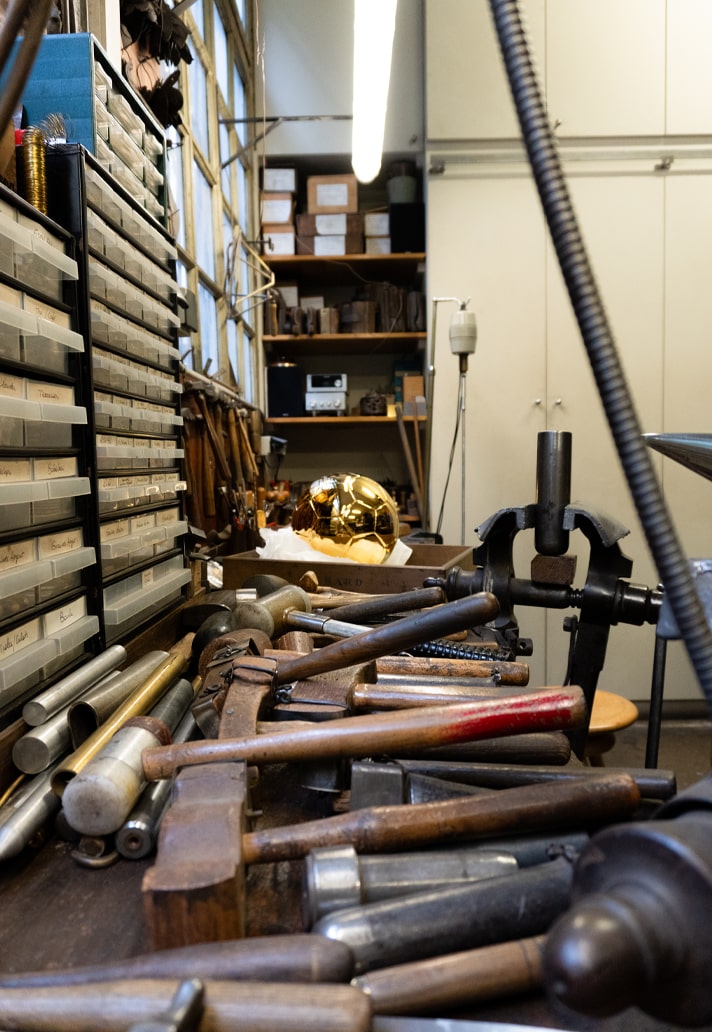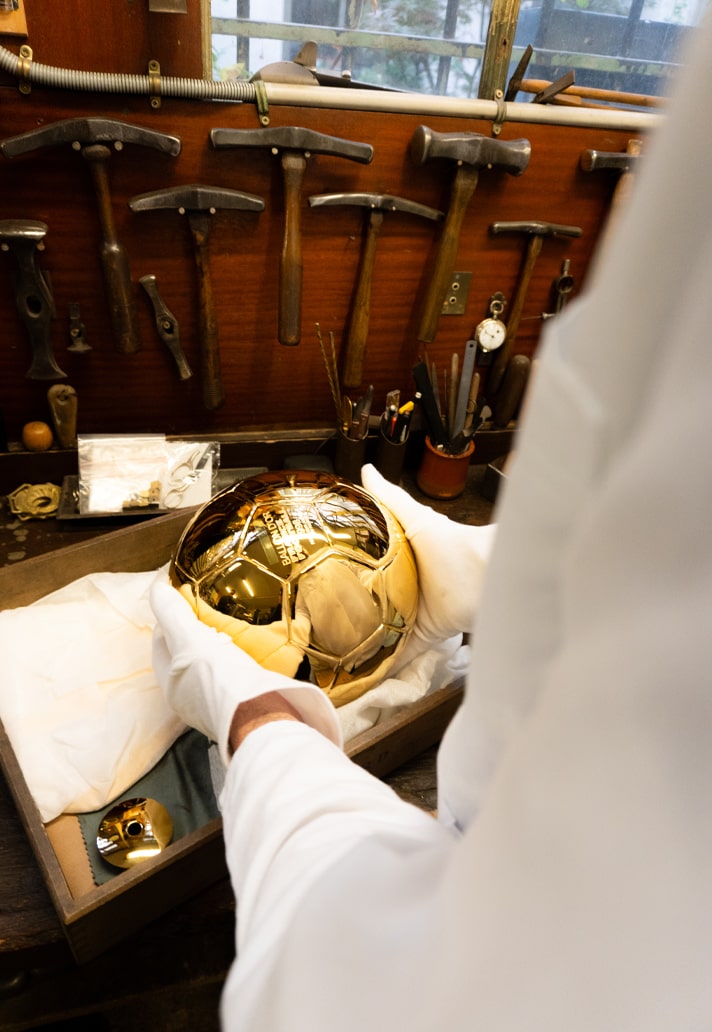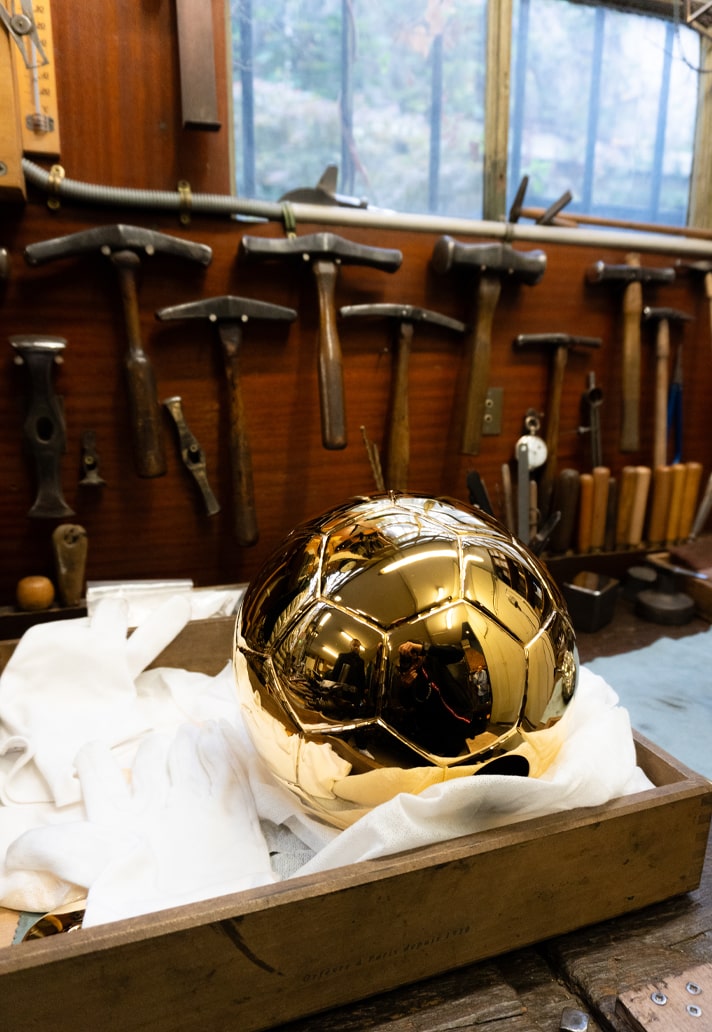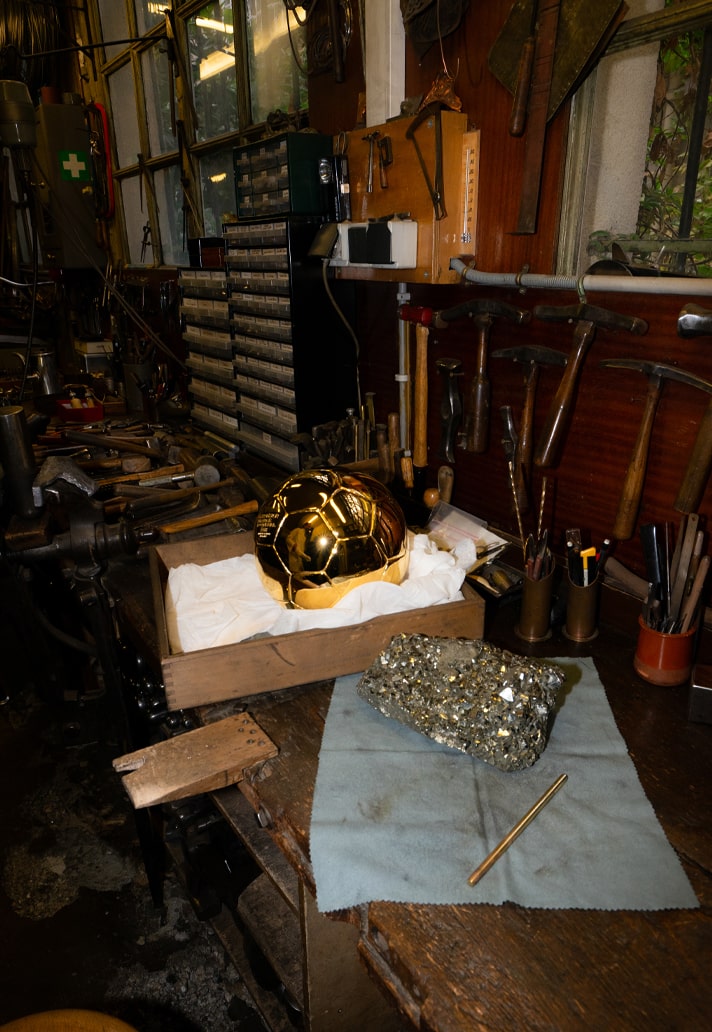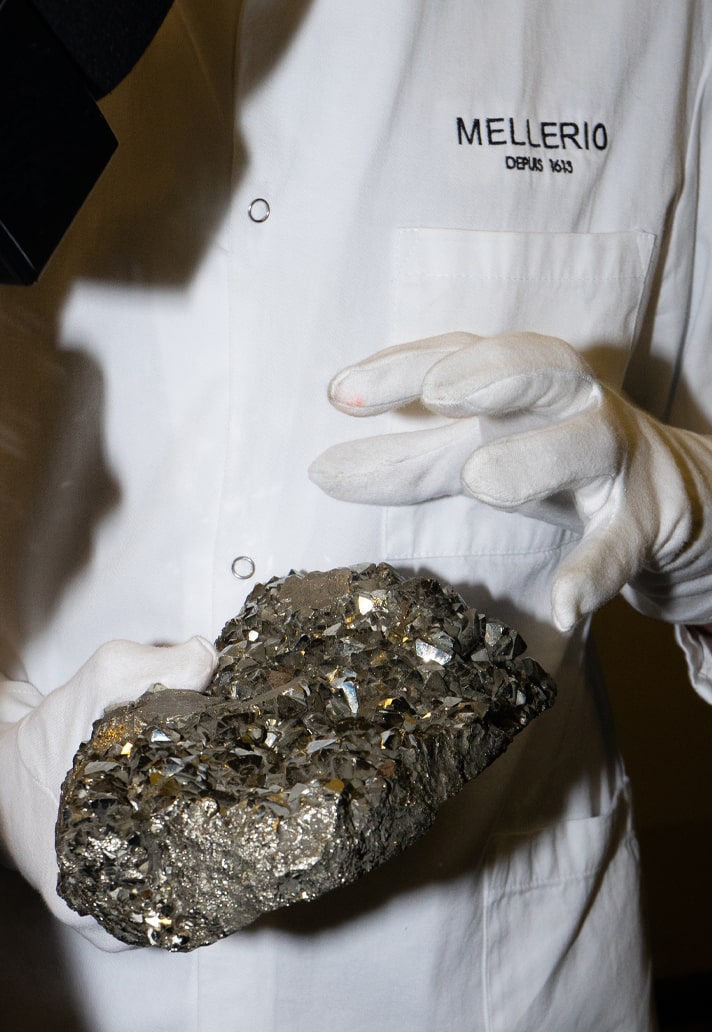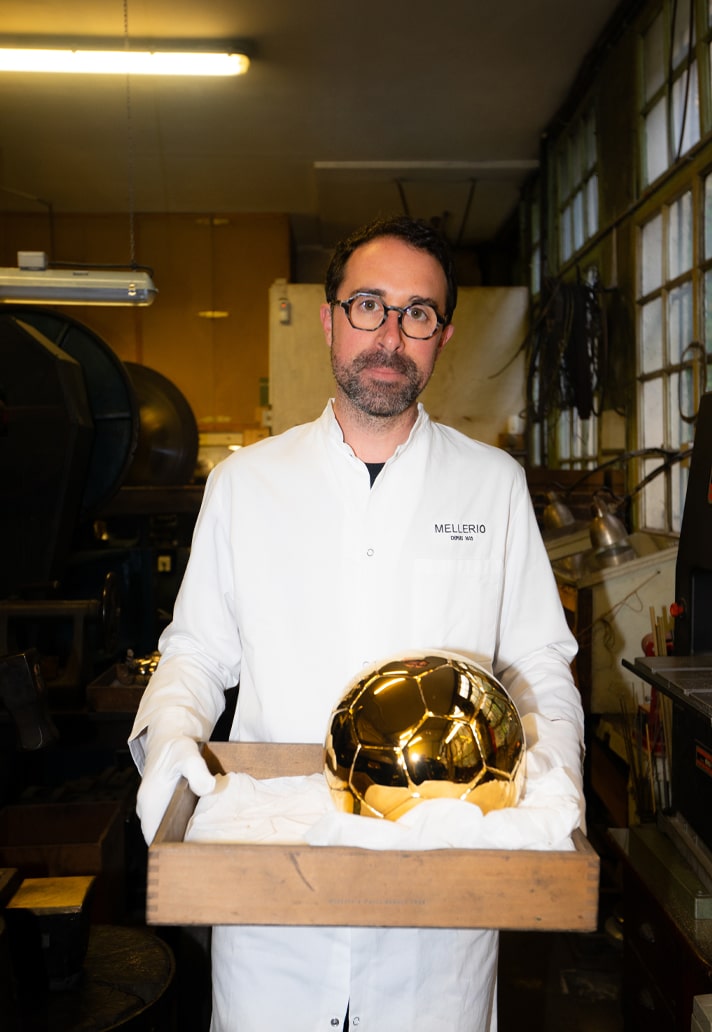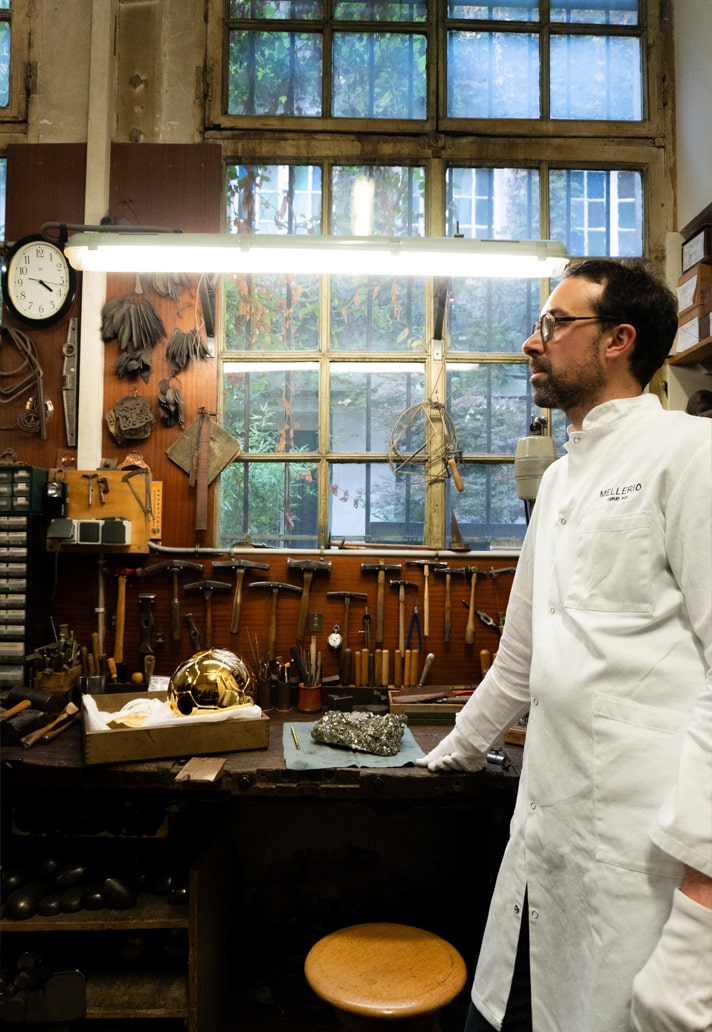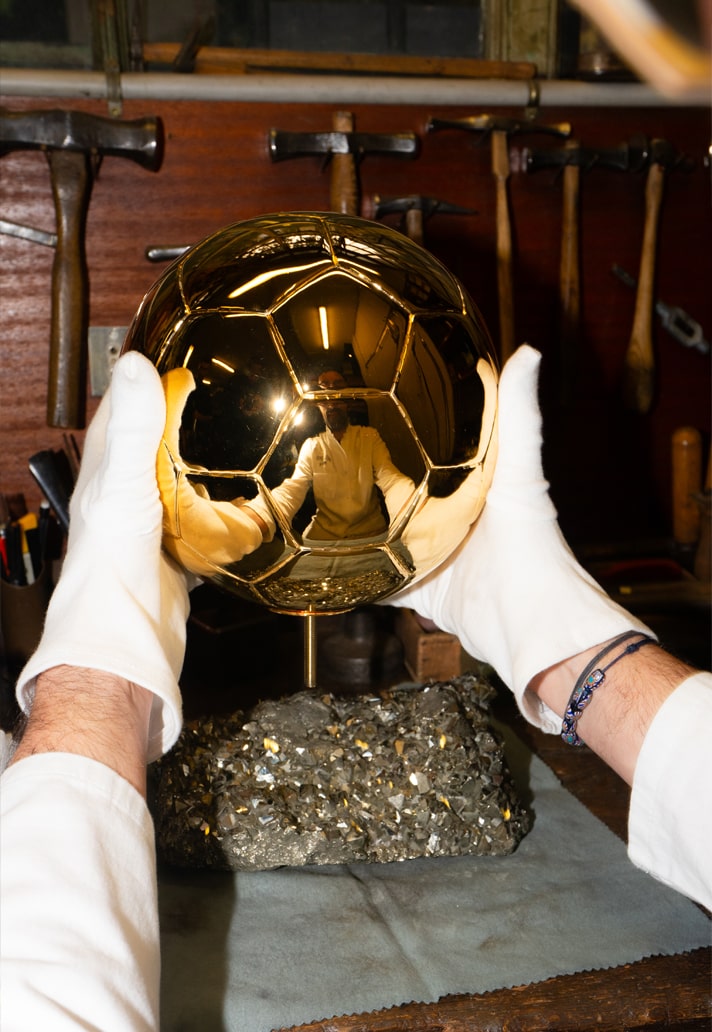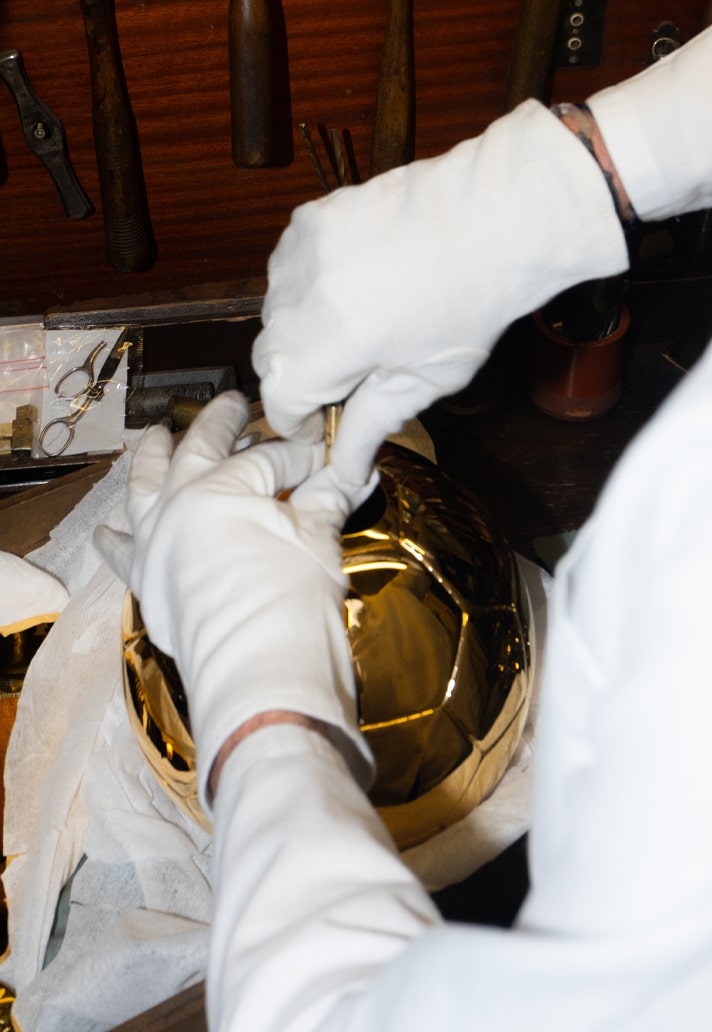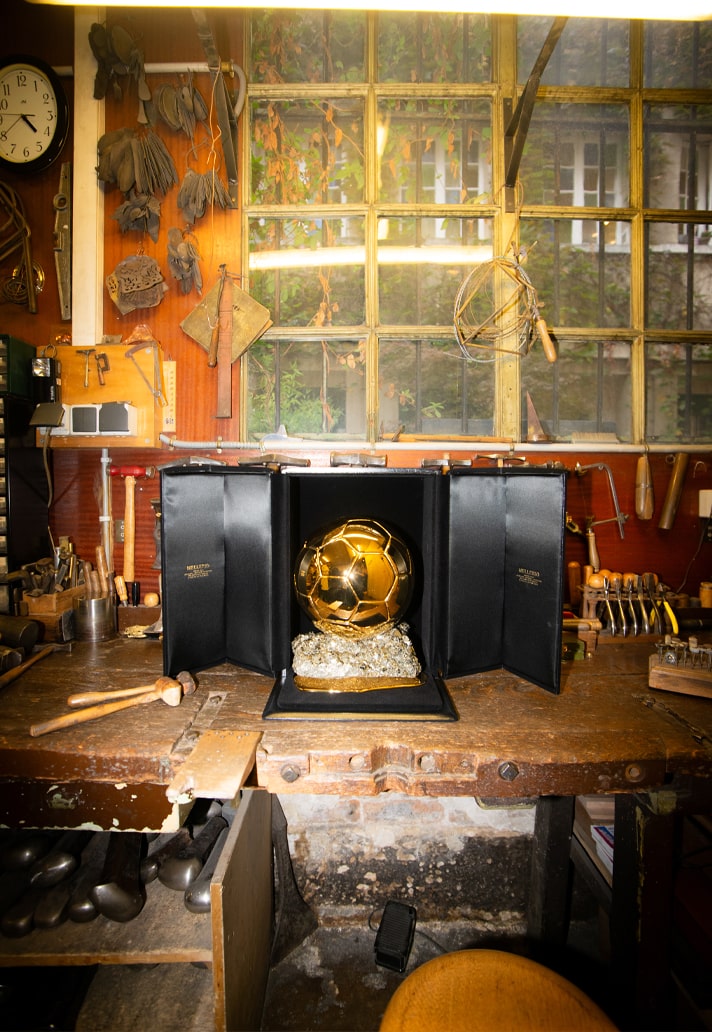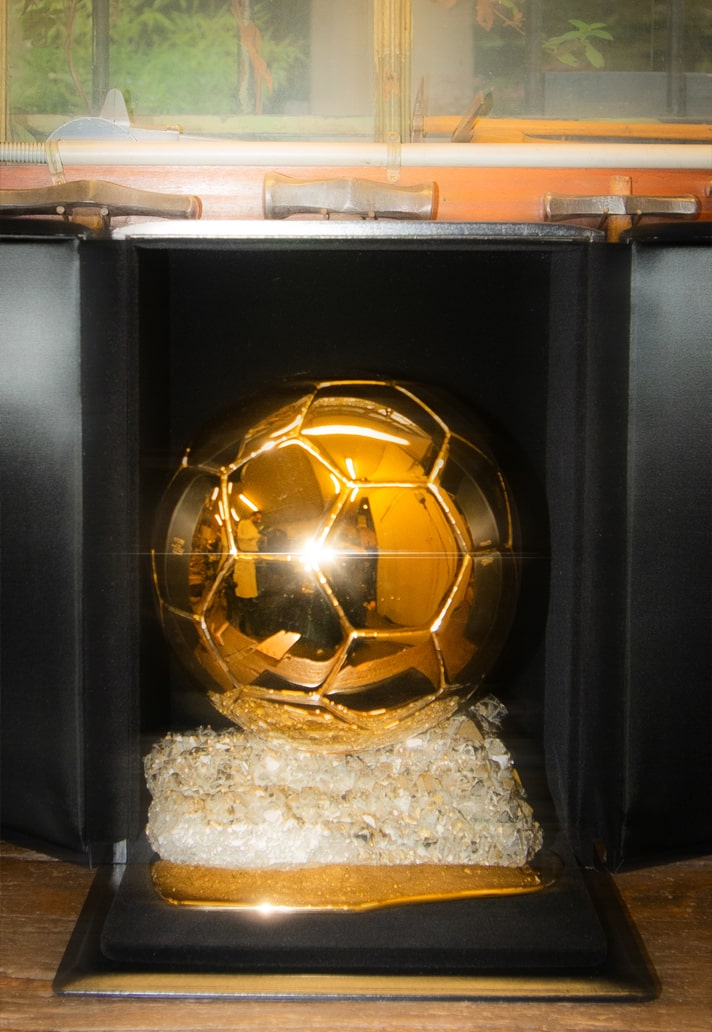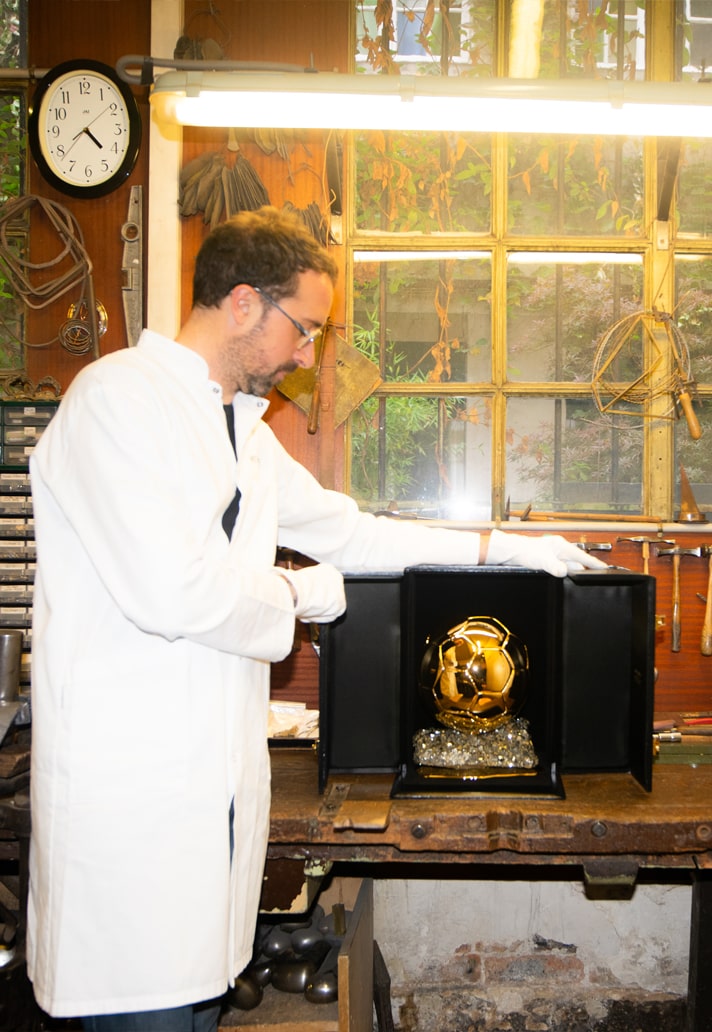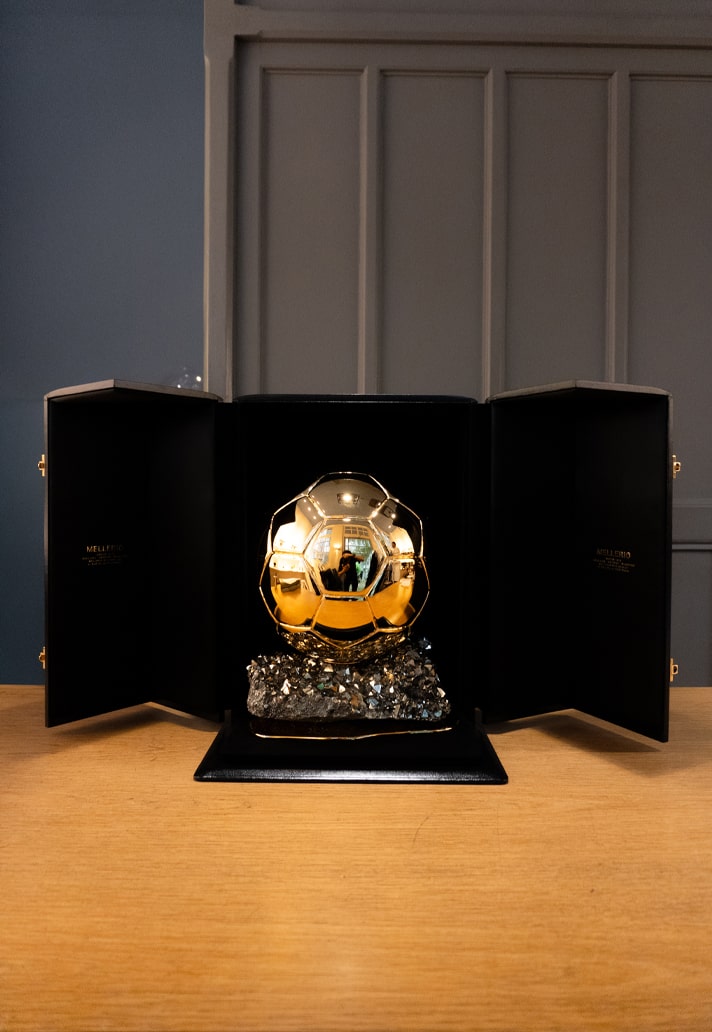It’s one of the most prestigious individual awards in the game, and so the Ballon d’Or deserves a trophy that’s as fitting as its status. Step forward Maison Mellerio, who’ve been crafting the trophy ever since the awards creation in 1956. Here, we get a close up look at the process of creating the trophy, with keen insight from one of the master goldsmiths involved.
From Sir Stanley Matthews and Alfredo Di Stéfano to Lionel Messi and Cristiano Ronaldo, with every Johan Cruyff and Marco van Basten in between, the Ballon d’Or has always existed as the pinnacle of individual brilliance in the game, symbolised by that beautifully crafted golden ball. And since the award’s beginning in 1956, Maison Mellerio has been discreetly crafting the trophy that takes its name from the award itself.
The Mellerio family were originally Italian goldsmiths who moved to France in 1515 to develop their trade in precious objects. Silver boxes, buckles and snuffboxes were soon sold to the Court, and generation after generation they became jewellers and watchmakers.
Today, Maison Mellerio has preserved this know-how, which has become extremely rare, and continues to make pieces of Haute Orfèvrerie, precious objects, table ornaments, academicians swords and, for almost a century, and most importantly in the context of this article, sports trophies. Maison Mellerio has created some of the finest sporting awards, from the Chausson d'Or in 1955 to the trophies for the French Open Roland Garros since 1981. But perhaps most famous of all the trophies is the Ballon d’Or.
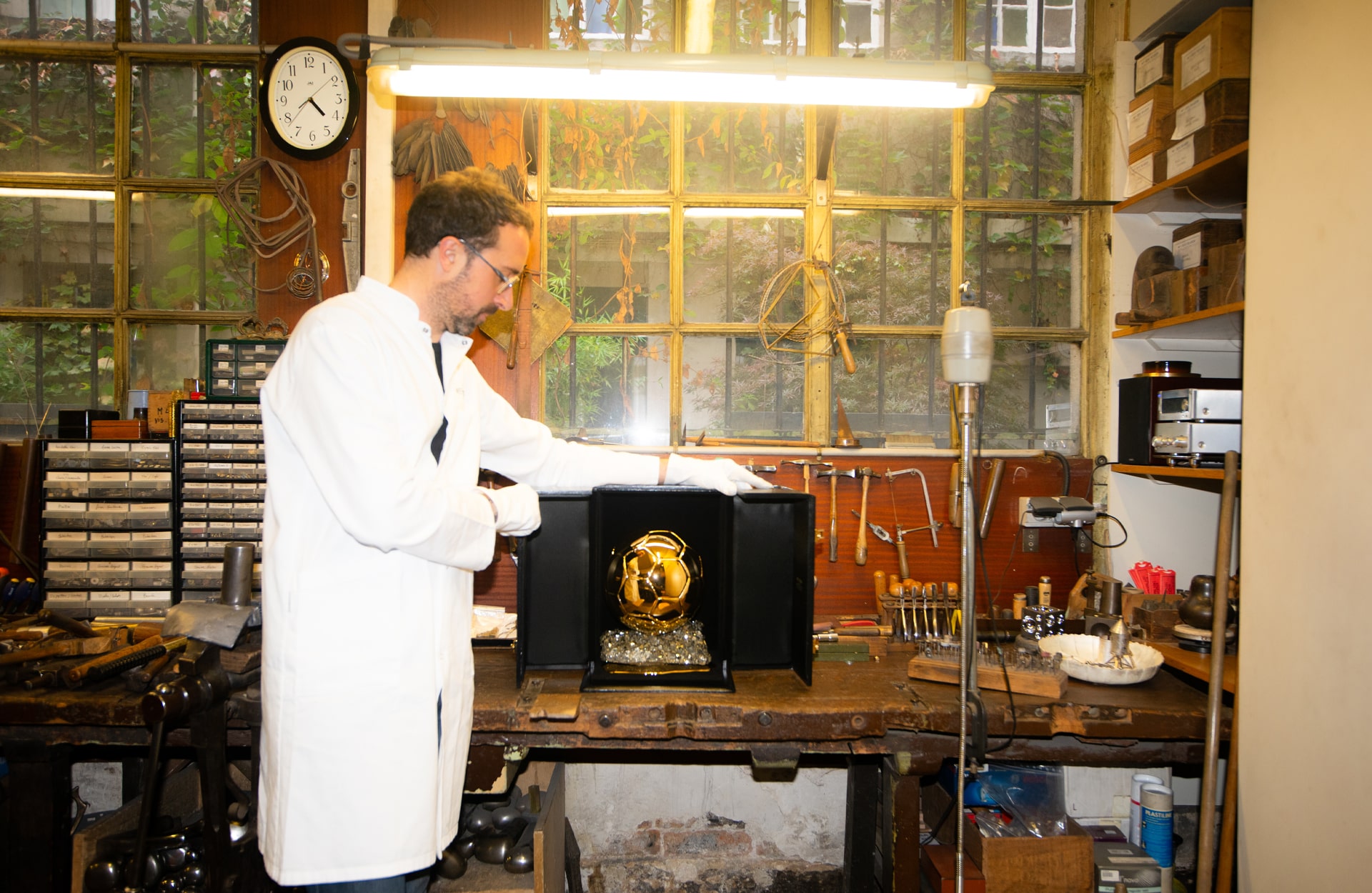
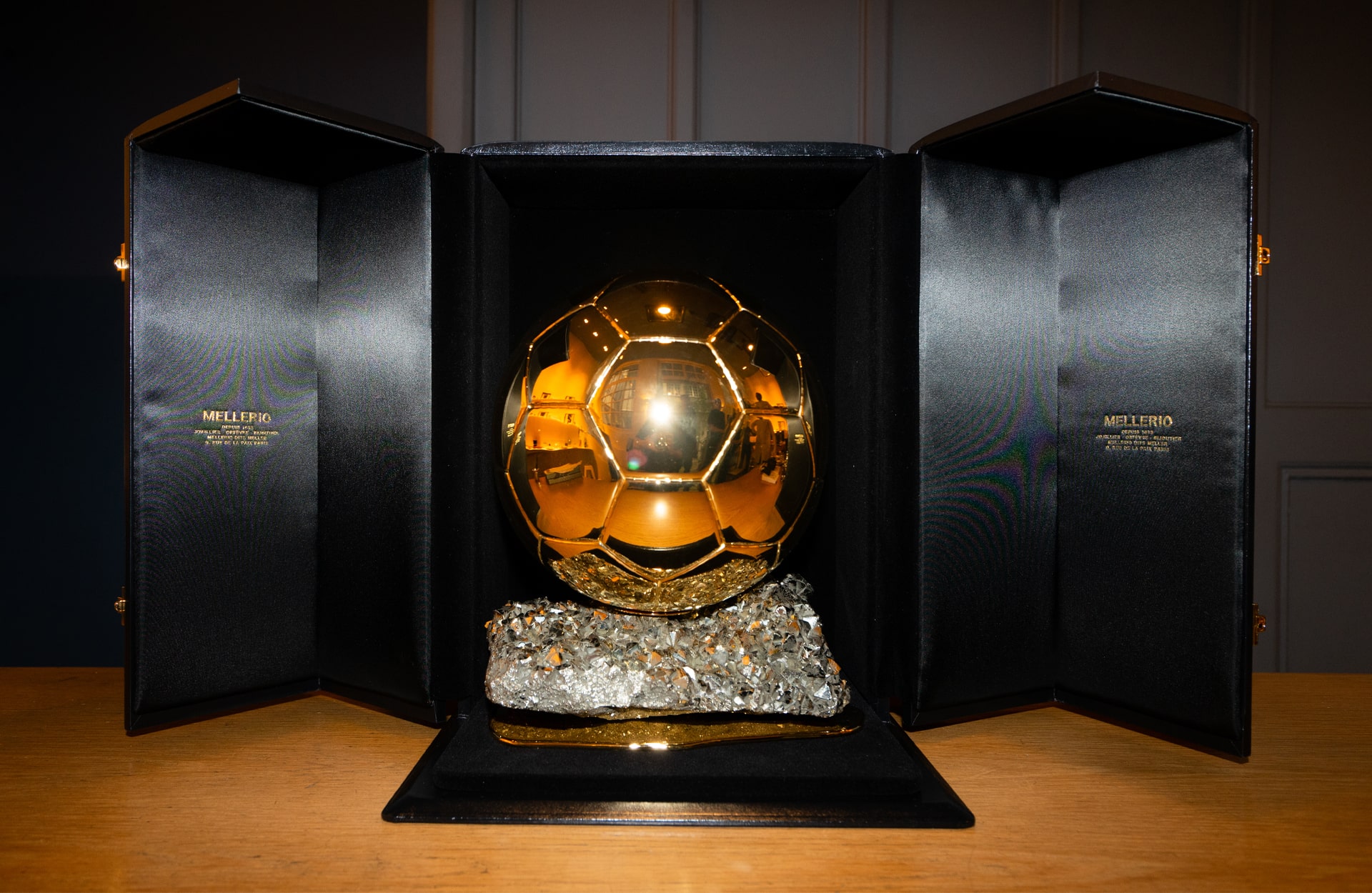
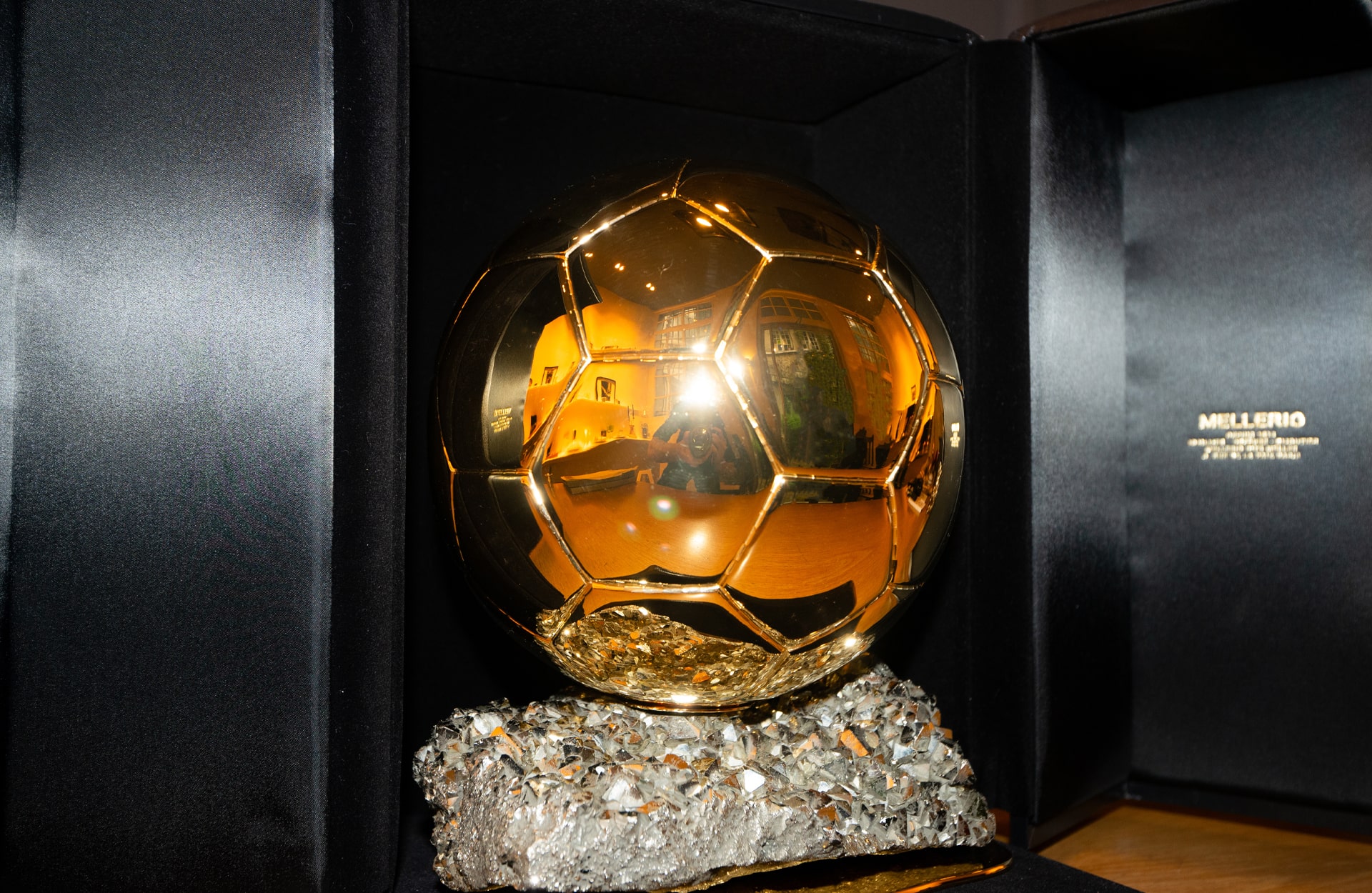
Over this 68-year association, the manufacturing process has not changed: it requires almost a hundred hours of work, and begins six months before delivery. Throughout this time, it passes through the hands of the goldsmith, chiseller, polisher, engraver, gilder and eventually back to the goldsmith in a painstaking process that is easily overlooked when the world’s elite footballers step up on to the stage to collect their prize. While last year we got a close up focus on the LV-designed travel case for the trophy, this year it's all eyes on the trophy itself, as we reveal the details of its remarkable creation with the help of Jean-Pierre, goldsmith at Maison Mellerio (for security reasons, surnames of the artisans are not disclosed).
Can you tell us about the artistry of creating such iconic and prestigious trophies - what does it mean to Maison Mellerio?
For us, it is a true honour to create such prestigious trophies. The Maison Mellerio has a long history of designing symbolic objects, with the Ballon d’Or, of course, but also Roland-Garros, for example. It is very prestigious for a goldsmith to work on an object like the Ballon d’Or.
This is a bit different from what we are used to do in the workshop, and it offers us unique global visibility. It’s incredible to see so many videos and articles featuring our work. Knowing that the Atelier Mellerio contributed to the creation of such a trophy, which symbolises excellence in football, is a great source of pride.
A partnership since 1956, how has that relationship evolved?
Since the creation of the Ballon d’Or trophy in 1956, the collaboration between L’ÉQUIPE and the Maison Mellerio has always been excellent. Whenever it has been necessary to rethink or adjust the design, we have managed to adapt while remaining true to the essence of the Ballon d’Or. This beautiful relationship, which has lasted for decades, is a source of pride for us.
100 hours to create a trophy – can you give us an insight into the creation process? What does creating a winner's trophy involve?
Designing a trophy like the Ballon d’Or is somewhat like following a cooking recipe, with precise steps. It all begins with shaping the metal. We start with brass discs, which we call “blanks.” Using the “repoussé” technique, we transform these blanks into two hemispheres, which are then joined together by welding. At this stage, we add silver to strengthen the two parts and create a complete sphere that forms the ball.
The piece is then entrusted to an engraver, who hand-draws the seams of the leather elements on the ball. Using small steel tools, he traces each seam with incredible precision. It is at this moment that the ball truly takes shape.
Next, we adjust the ball to the pyrite base, a stone we select each year based on discoveries by geologists. Each base is unique, as nature provides us with different pyrite each time. We then carve this stone so that it fits perfectly with the Ballon d’Or.
Finally, the base of the pedestal is a brass plaque that is engraved and signed, marking the final touch. Once everything is gilded, we proceed with the final assembly, taking all necessary precautions to join the ball and the base. It is a meticulous process, step by step, that gives birth to this exceptional trophy.
It feels very hands on and crafted, can you tell us about that?
Absolutely, the production of the Ballon d’Or remains profoundly artisanal. This is partly due to the fact that we only produce two each year, making every trophy unique. As I mentioned, the pyrite used for the base varies from trophy to trophy. Therefore, it is impossible to mechanize the production through industrial processes. Everything relies on manual adjustments, and this is where the complexity and beauty of the goldsmith's craftsmanship lie. This is truly what is meant by “work of a goldsmith.” (in french, we say “travail d’orfèvre” to refers to a work that is extremely meticulous, precise, and of high quality, carried out with great craftsmanship and attention to detail.)
Each step, whether it's welding the elements, chiseling the details, or engraving, is performed with extreme precision. There are very specific artisanal jobs involved, such as engravers, chisellers, goldsmiths, gilders, and “repoussé” specialists. Each of these artisans plays an essential role, much like members of an orchestra working together to create a beautiful recital. The creation of the Ballon d’Or therefore requires meticulous coordination and unique expertise to bring this prestigious work to life.
What goes into them in terms of materials?
The main materials used for the Ballon d’Or are primarily brass. Beneath the thin layer of gold, it is solid brass, which we shape through several steps: it is formed, chiselled, repoussé, engraved, and finally polished to achieve that perfect appearance. Once these steps are completed, we cover it with pure gold. This is how all the features of the Ballon d’Or take shape. As for the base, it is made from natural pyrite.
How does it feel to have trophies you've created in the homes of the very elite of the game from so many generations?
That’s a question I often ask myself! I wonder where these trophies end up, in which prestigious places they are displayed. It’s quite fascinating to imagine that the Ballon d’Or we crafted resides with these legends of football. It adds an almost surreal dimension to the work, knowing that our creation is part of their story.
Are there any trophies in the history that you've been most proud to create for? Any certain players or a moment in time that is most touching and emotionally connected to Maison Mellerio?
We always feel immense pride when these great players are celebrated with such a prestigious trophy, knowing that they are receiving a piece we crafted by hand after weeks and weeks of meticulous work. A particularly memorable example for me is undoubtedly Zidane’s Ballon d’Or in 1998. It was a special moment because he was "our" winner, a French champion, and for a historic house like Maison Mellerio, there was a certain emotion in engraving Zidane's name on this trophy. Let’s say we are a bit patriotic, but it was a moment of great pride for us. And a few years later, it was with the name of Karim Benzema.
Football and jewellery go hand in hand. The game has so much style, fashion and glamour attached to it now. How does that reflect you as a brand?
Footballers often become ambassadors for major fashion, glamour, or art houses. Whether at parties, events, or cocktails, it’s not uncommon to see high jewelry pieces accompanying haute couture outfits. As goldsmiths, our work, like that of jewelers, is meticulous and requires excellence in execution. The Ballon d’Or, for example, is an exceptional piece, a unique object that belongs to this world of excellence.
We shape, transform, and domesticate the material. For some, it may be leather or fabric for haute couture or embroidery, and for us, in goldsmithing or jewellery, we elevate stones or a line created by a design with a material by working with silver or gold. Ultimately, these are crafts of artistic craftsmanship, and it is this connection that brings us closer to the world of sports, fashion, and glamour.
What makes the Ballon d'Or the greatest award in football for you?
What sets the Ballon d’Or apart is primarily its composition and the noble materials that make it up. France Football has always collaborated with the Maison Mellerio to design a trophy made of brass, gold-plated, and pyrite. It is not a trivial object; it is a true work of art that combines craftsmanship, tradition, and excellence from a French house, with a product that is entirely made in Paris.
The fact that it is unique – and for a few years now, available in two versions with the Women’s Ballon d’Or – crafted by hand with the utmost care and in secrecy adds to its allure. I would also say that engraving the names of the winners at the very last moment brings a lot of magic and excitement. It's a reward of inestimable value. And, of course, the prestige of the Ballon d’Or also lies in the fact that it honours the greatest players in the history of football, those who have left a mark on the sport with their talent and exceptional performances.
The 2024 Ballon d'Or is set to take place on Monday, 28 October.
